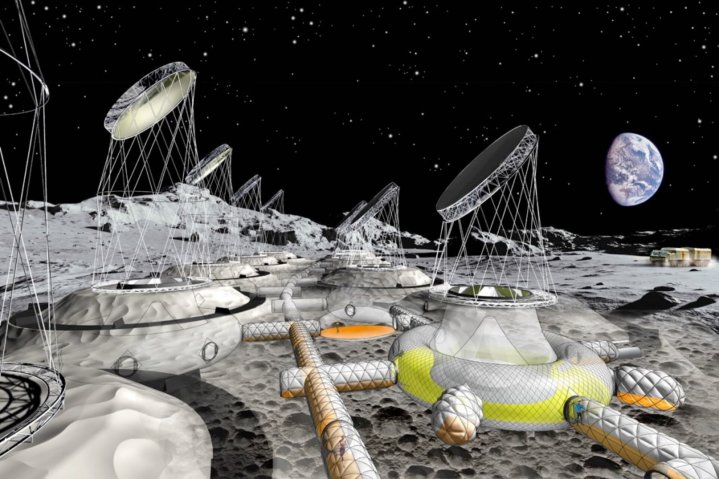There’s an increasing interest in sending crewed missions to the moon, and not just for a few days as happened under the Apollo program, but for longer periods of weeks or even months. For a longer-term mission like this, any astronaut crew would need a habitat where they could live and work during their time on the lunar surface — so a new type of lunar structure will be required. What’s the best way to build a lunar habitat? That’s a question several space agencies and private companies are pondering. The European Space Agency (ESA) recently shared one idea, which is to create an inflatable lunar base.
The idea is to pre-fabricate lightweight structures that could pack down into a small space for transport, then be inflated once a crew arrives on the moon. The structures would be buried under several meters of lunar soil, called regolith, to protect the astronauts and their equipment from radiation. And on the surface, mirrors would be placed which tracked the sun and reflected it toward a greenhouse where plants could be grown to produce oxygen.

The design, from Austrian company Pneumocell, was recently submitted to ESA and has several advantages over other habitat concepts. One big advantage is the lightweight nature of inflatable structures, as there are strict weight limits on what can be launched into space and more weight requires more fuel and a larger rocket. Another advantage is the modularity of the system, allowing different structures to be added as needed for various missions.
In its report on the project, Pneumocell says that the habitat could be launched with currently available rockets. “We checked, which of the existing or planned spaceships could be used to transport the material and astronauts to the lunar site, where the habitat should be built,” the report states. “While the SpaceX Starship would clearly be able to transport the necessary components to the Moon, our concept could also be realized with the help of smaller rockets like the Ariane-64, in combination with the planned European Large Logistics Lander.”
The report states that the next step would be to build a prototype of the habitat on Earth to check its performance in real-world conditions.
Editors' Recommendations
- These 3 companies are developing NASA’s new moon vehicle
- Asimov’s vision of harvesting solar power from space could become a reality
- See images of the tilted Odysseus lander on the moon
- U.S. spacecraft lands on the moon for the first time in over 50 years
- SpaceX just launched a moon mission that could enter the history books




